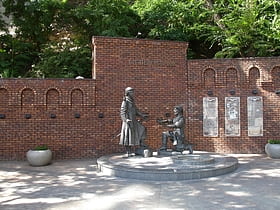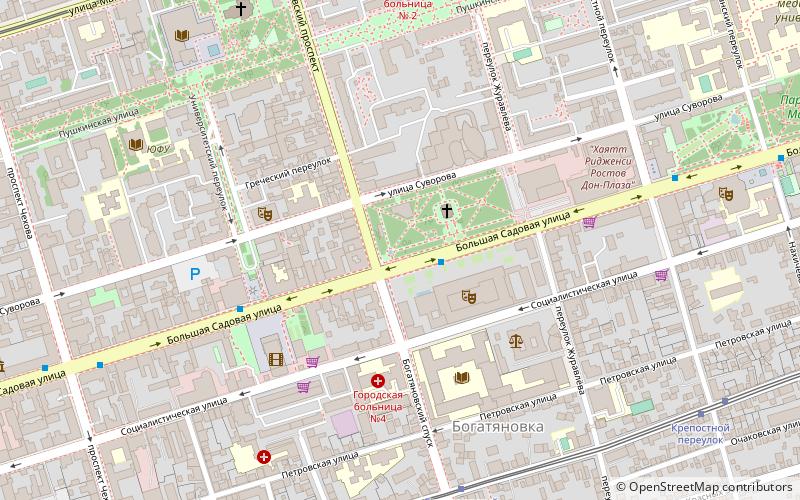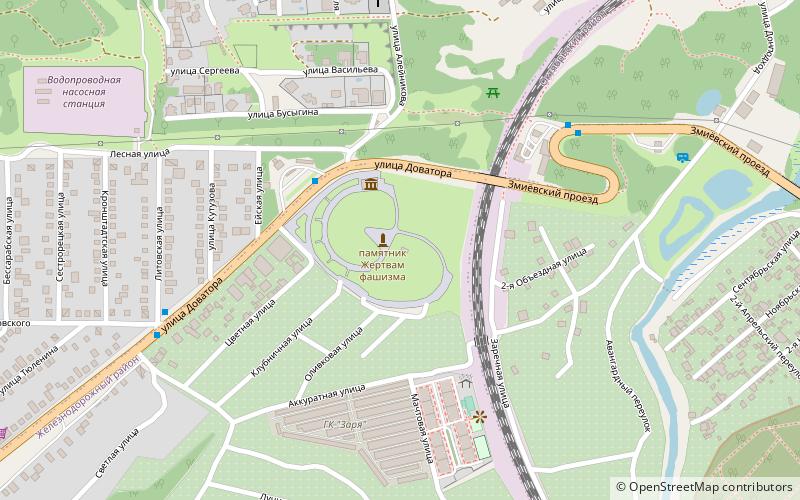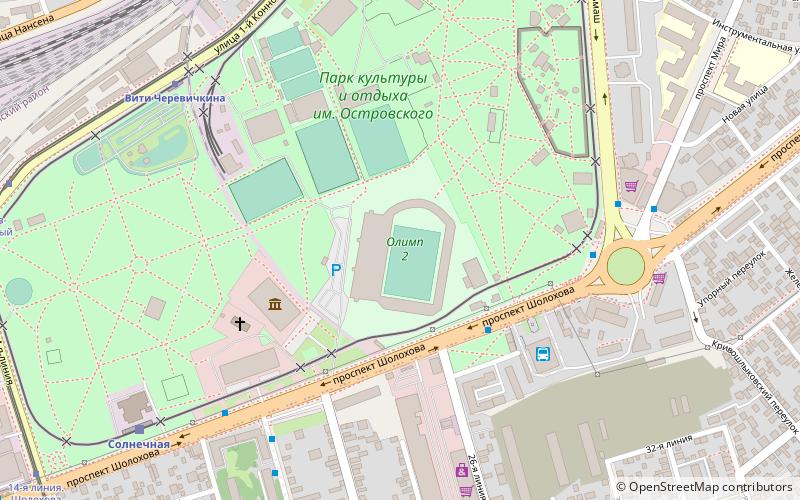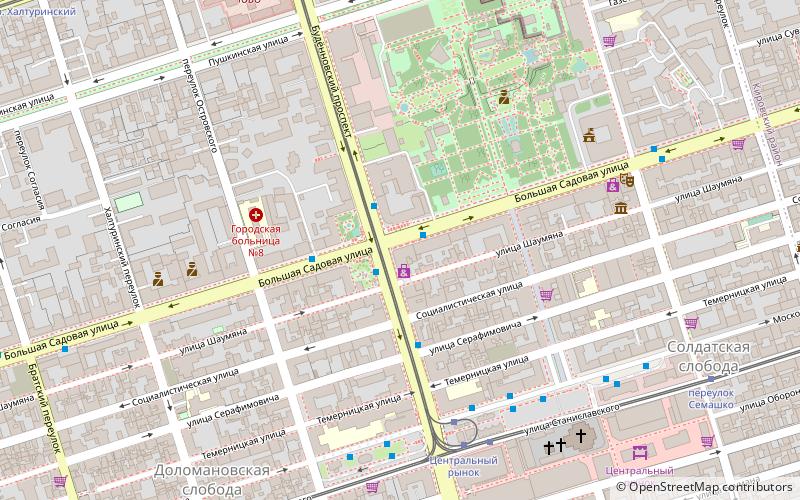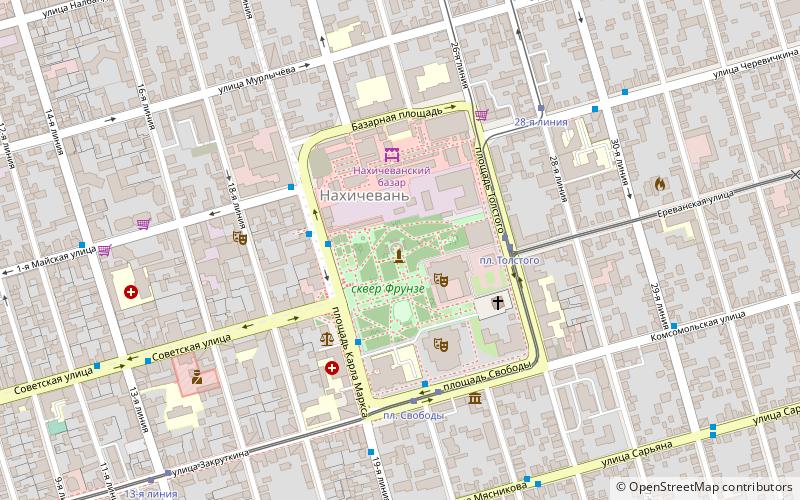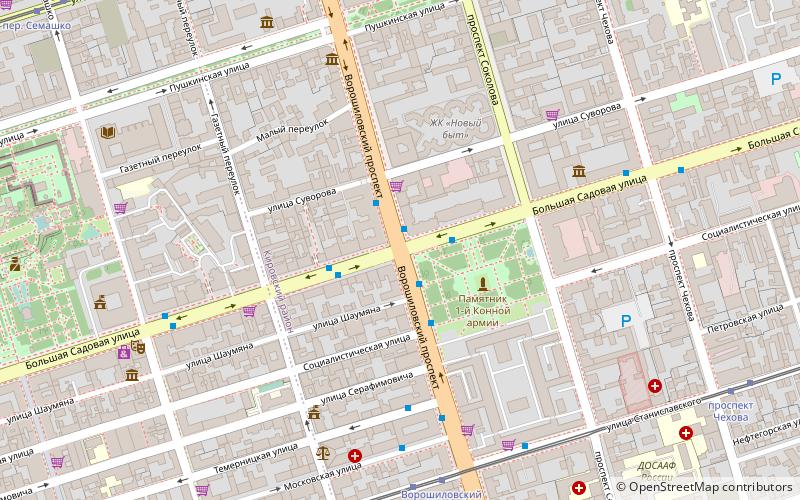Rostov-on-Don: Memorial
Places and attractions in the Memorial category
Categories
More categoriesThe Rich Well
The Rich Well is an emblematic historical site nestled in the heart of Rostov-on-Don, Russia. This ancient well, which dates back to the early 20th century, is renowned for its unique architectural design and the cultural significance it holds within the city.
Stele City of Military Glory
Stele City of Military Glory stands as a solemn symbol of remembrance and honor in the heart of Rostov-on-Don, Russia. This significant monument was erected to commemorate the city's designation as a "City of Military Glory," a title bestowed by the Russian government...
Chekhov Monument in Rostov-on-Don
In the heart of Rostov-on-Don, a cultural gem stands as a tribute to one of Russia's most celebrated literary figures: the Chekhov Monument. This bronze sculpture, dedicated to the great Russian playwright and short-story writer Anton Chekhov, captures the essence of...
Paramonov Warehouses
Nestled on the banks of the Don River, the Paramonov Warehouses in Rostov-on-Don, Russia, are a remarkable example of 19th-century industrial architecture. These historical warehouses, constructed between 1881 and 1883 by the merchant brothers Paramonov, represent a...
Suprunov mill office
The Suprunov mill office is a renovated building on Budennovsky Avenue in the historical part of Rostov-on-Don. The mill's office was built at the end of the 19th century. It is listed as an object of cultural heritage of regional importance.
Theater Square fountain
The Theater Square fountain is the largest fountain in the city of Rostov-on-Don, Russia. After the construction of the theater. M. Gorky in 1936, next to it was equipped the Theater Square with a fountain in the center. The author of it was a young sculptor Yugene Vuchetich, the graduate of the Rostov Art College.
Mansion of Eva Spielrein
The Spielrein Mansion is a house located at 83 Pushkinskaya Street in Rostov-on-Don. It has the status of an object of cultural heritage of regional significance.
Monument to a water supply system
The Monument to a water supply system is a bronze monument which was open in Pokrovsky Square of Rostov-on-Don opposite to city Musical theater.
Monument to the Communications Workers of Don
Monument to the Communications Workers of Don is the monument which was opened on 9 September 2016 at the entrance to Ostrovsky Park in Rostov-on-Don. The author of the monument was the sculptor Valentin Kostev.
Wayside crosses in Rostov-on-Don
Wayside crosses are monumental constructions in the form of a cross in the city of Rostov-on-Don, Russia.
Kumzhensky memorial
Kumzhensky memorial, Russian: Кумженский мемориал is a memorial complex in Zheleznodorozhny district of Rostov-on-Don. It is located in the west of the city in the Kumzhensky grove on the arrow of the Don and the Dead Donets.
Zmievskaya Balka
Zmievskaya Balka, Zmiyovskaya Balka is a site in Rostov-on-Don, Russia at which 27,000 Jews and Soviet civilians were massacred in 1942 to 1943 by the SS Einsatzgruppe D during the Holocaust in Russia.
Monument to the first-grader
Monument to the first-grader is a bronze monument which is located in the courtyard of the gymnasium № 36 on Gorky Street, 115 in the Leninsky district of Rostov-on-Don.
The monument to Victor Ponedelnik
The monument to Victor Ponedelnik - a bronze sculptural composition, was installed near the stadium "Olympus-2" in Rostov-on-Don in honor to the footballer Victor Ponedelnik, who scored the "golden goal" in the final of 1960 European Nations' Cup.
Trading House of G.G. Pustovoytov
Trading house of G.G. Pustovoytov is a building in Rostov-on-Don at the intersection of Bolshaya Sadovaya and Budennovskiy avenue.
Memorial complex to the Fallen Warriors
Мemorial Complex «To the Fallen Warriors» — is a monument with eternal fire in Rostov-on-Don in the Frunze square in Karl Marx square. Dedicated to the soldiers and peaceful people who died in the Great Patriotic War. The monument was opened in 1969. The authors of the memorial are E.G. Mirzoev and A.V. Simonenko.
Gavala house
The Gavala House is a building in Rostov-on-Don at 93 Pushkinskaya Street. It was built as a town house in the late 19th century. The building has the status of an object of cultural heritage of Russia of regional significance, and is №6130164000.
House of Masalitina
The Masalitina House, also known as the Vorozhein House is a building in Rostov-on-Don located at the intersection of Bolshaya Sadovaya Street and Kirovsky Prospekt. It was built in 1890 to the design of architect Grigory Vasilyev in the eclectic style. At the beginning of the 20th century, the house belonged to the merchant P. K.
School No. 49
School № 49 Russian: Школа № 49 is an educational institution in Rostov-on-Don. The building was built in the 1910s on the project of the engineer V. V. Popov in the Art Nouveau style. The gymnasium building has the status of an identified cultural heritage site.
House of Ivan Zvorykin
The Ivan Zvorykin House is a building in Rostov-on-Don located at the intersection of Pushkinskaya Street and Semashko Lane. It was built in 1914 to the design of architect Vasily Popov. In the period of the Russian Empire, the house was the office and residence of Rostov-on-Don's mayor, major-general Ivan Nikolayevich Zvorykin.
Volga-Kama Bank Building
Volga-Kama Bank Building is a building in Rostov-on-Don constructed in Modern style in the beginning of the 20th century on the project of architect Alexander Beketov. It has the status of an object of cultural heritage of federal significance.
Subways
Subways of Rostov-on-Don are pedestrian walkways which were built in the city between the late 1960s and the early 1980s.
Monument to Stepan Razin
Monument to Stepan Razin is one of the monuments in the city of Rostov-on-Don, Rostov Oblast, Russia. It is dedicated to Stepan Razin, the leader of the peasant uprising of 1670-1671. The monument is also considered to be an object of cultural heritage.
House of Maximov
The Maksimov House is a building in Rostov-on-Don built in the middle of the 19th century in the neoclassical style. It is one of the oldest surviving stone buildings in the city. The first owner of the house was the merchant P. R. Maksimov. The Maksimov House has the status of an object of cultural heritage of regional significance.
Main building of Warsaw University
The main building of Warsaw University is a building in Rostov-on-Don. It was designed by the architect I. E. Cherkessian and constructed in 1912–1914.
Monument to Dimitry of Rostov
Monument to Dimitry of Rostov ― is a statuary monument constructed in 1999. It is situated at the Cathedral Square in the city of Rostov-on-Don, Russia.
Residential house of Nikolai Panin
The residential house of Nikolai Panin is a building in Rostov-on-Don which was built in 1910 in modernist style.
Trading house of Yablokovy
Trading house of Yablokovy is a building located at 64 Bolshaya Sadovaya Street in Rostov-on-Don. It was built in 1898 upon the project of architect E.M. Gulin and is considered as a cultural heritage site.
Profitable house of I. M. Trofimenko
The Profitable house of I. M. Trofimenko is a mansion built in the beginning of the 20th century in Oktyabrsky district of Rostov-on-Don executed in eclecticism style. It is located at 73 Prosveshcheniya Street. The building is an object of cultural heritage of local value.
Profitable house of Sariyev
The Sariyev House, or in full the Sariyev revenue house or Yemelyanov revenue house is an early 20th century building in the city of Rostov-on-Don. It was designed by architect Andrei Fyodorovich Nidermeyer in the Art Nouveau style, and belonged to the sisters Olga and Elena Sariyev. The house is located at 94 Bolshaya Sadovaya Street.
Srabionov's house
Srabionov's house is a building in Rostov-on-Don built in the 1910s on the project of the architect A. H. Zakiyev. Initially the house belonged to S.D. Srabionov, in him the Petrograd hotel was placed. As of 1925 it was DOMHA hotel "Business yard". From 1940th years the hotel carried the name "Don".
Armenian Cemetery
Armenian Cemetery is a cemetery in the city of Rostov-on-Don, Russia. Officially known as Proletarian Cemetery. It is situated in the Proletarian District of the city.
Northern Cemetery
The Northern Cemetery in Rostov-on-Don is a cemetery in Rostov-on-Don, Russia. The cemetery is the largest cemetery by area in the European part of Russia and is also one of the largest cemeteries in the whole of Europe.
Pamatnik stacke 1902 goda
Monument to the 1902 strike is a memorial complex in the Zheleznodorozhny district of Rostov-on-Don. It was installed on the site of crowded rallies during the November 1902 strike.
Map

